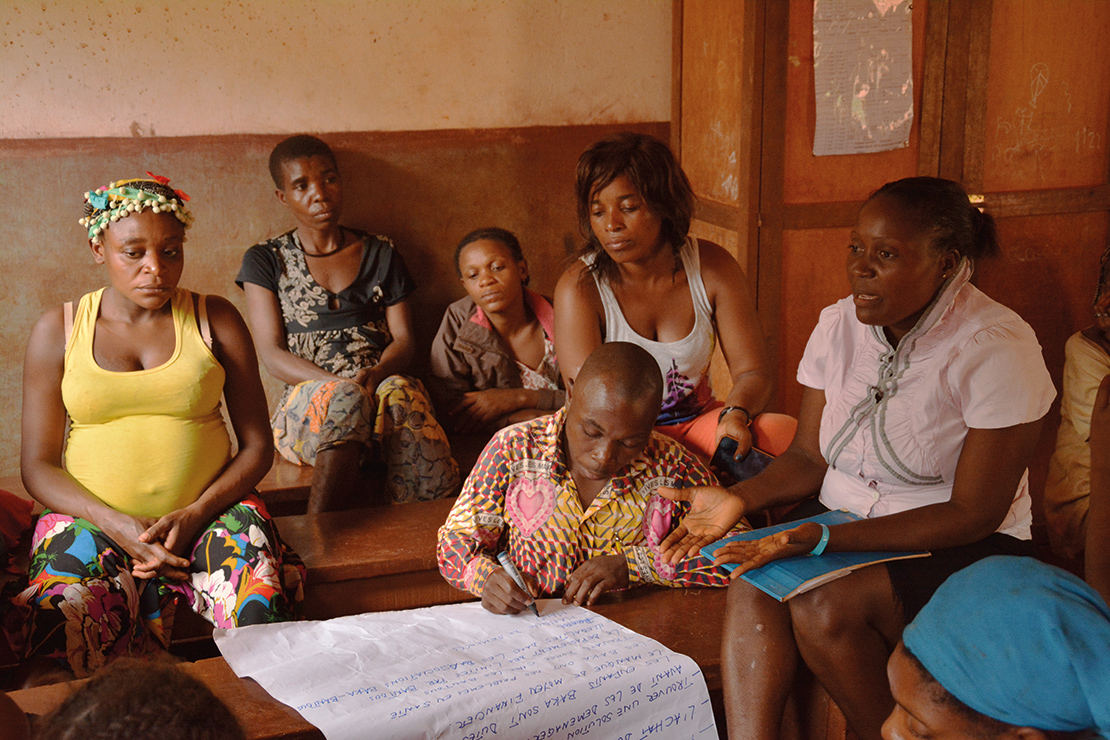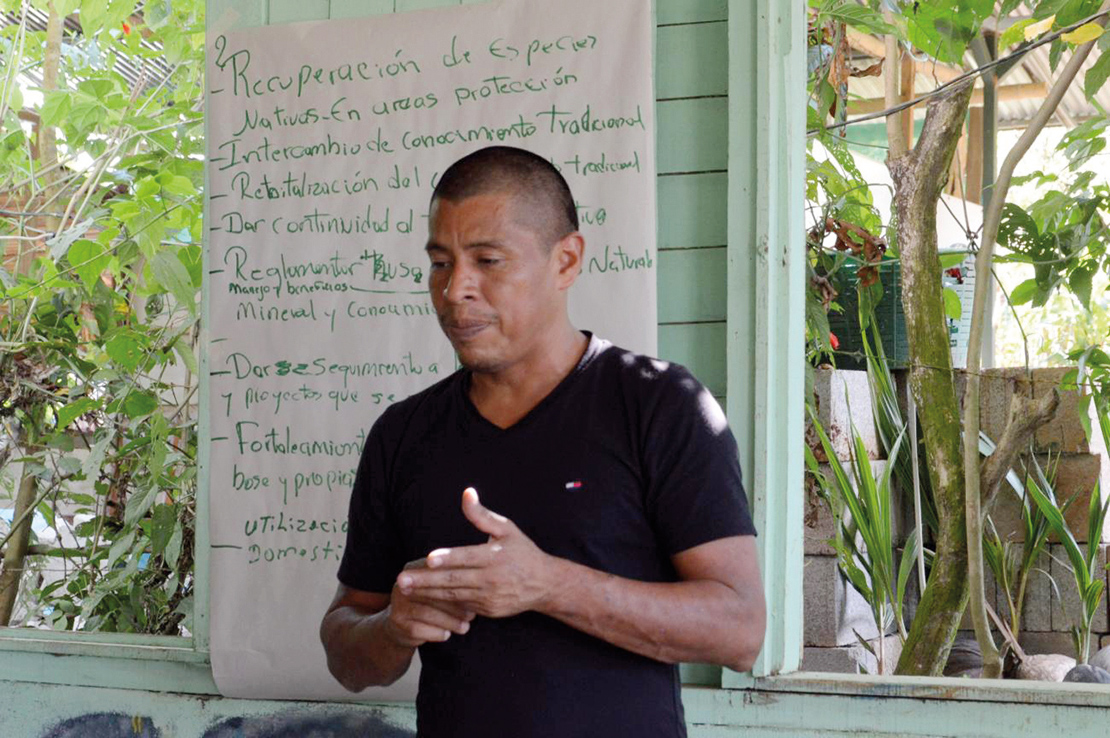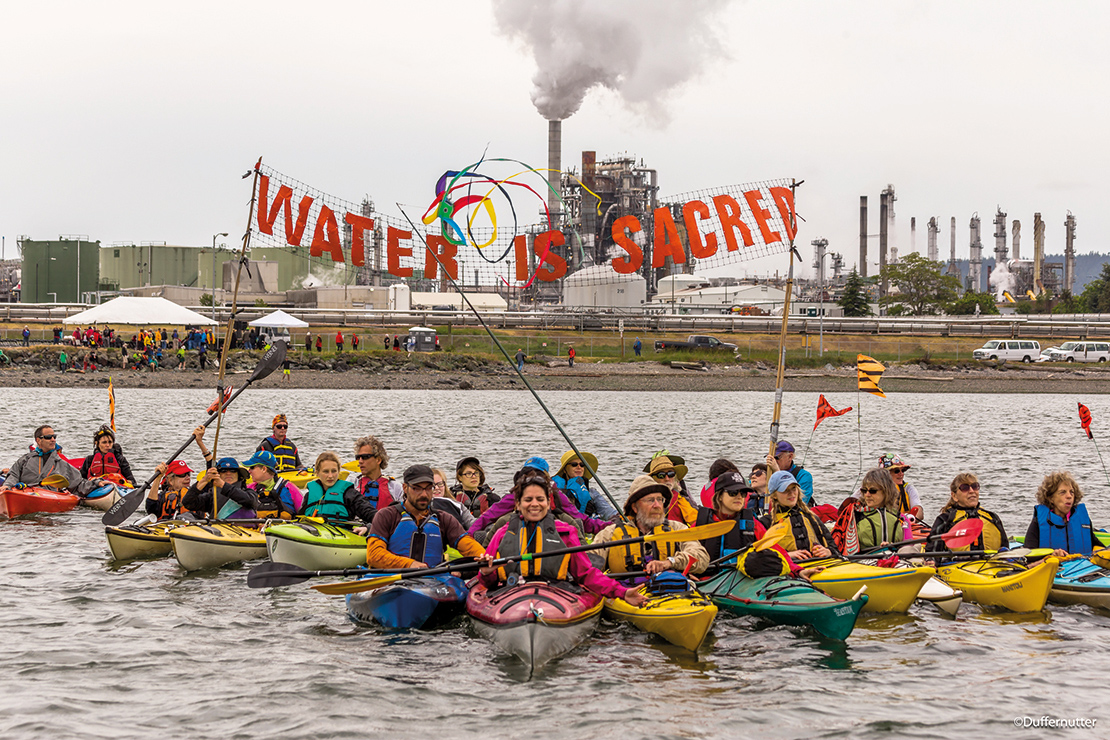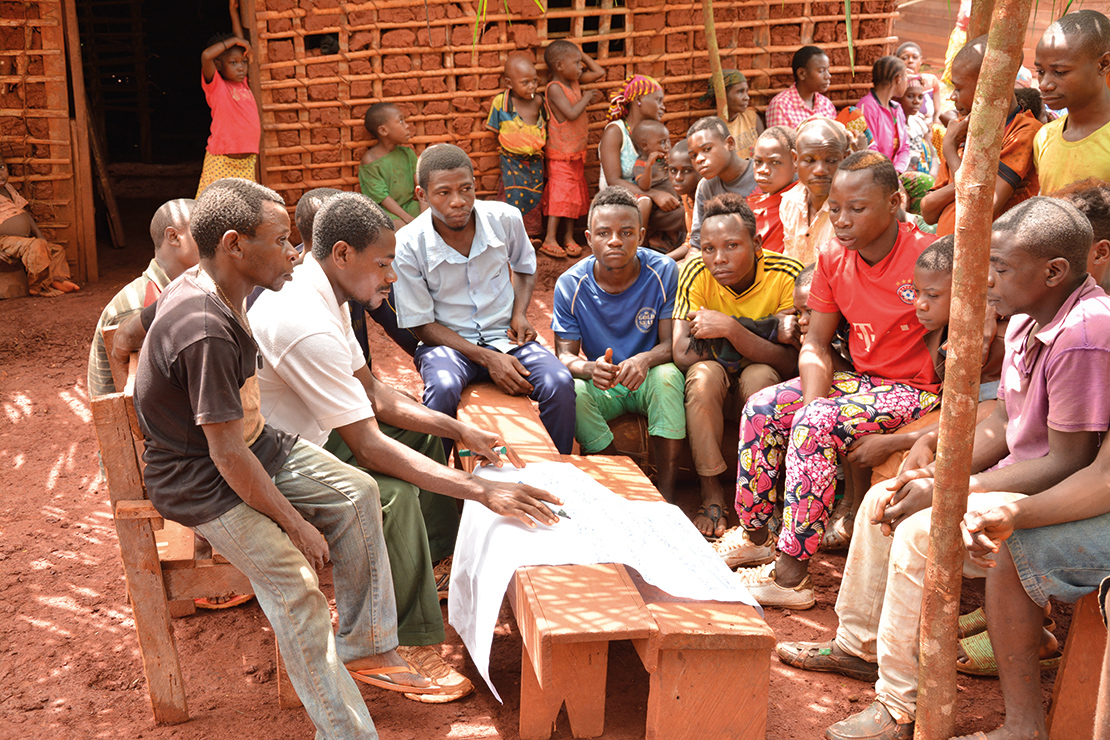
Target 17: Biodiversity strategies and action plans
By 2015 each Party has developed, adopted as a policy instrument, and has commenced implementing an effective, participatory and updated national biodiversity strategy and action plan.
Key messages
- The role and contributions of IPLCs in maintaining biodiversity and healthy ecosystems is poorly recognised in most national biodiversity strategy and action plans (NBSAPs) and national targets, a major missed opportunity by Parties.
- Appropriate institutional and financial mechanisms to foster the full and effective participation of IPLCs in the development, implementation and monitoring of biodiversity strategies and action plans—both community-based and national—is essential to ensure effective post-2020 progress at national, regional and global scales.
Significance of Target 17 for IPLCs
Target 17 is important for IPLCs because their full and effective participation in the development and implementation of NBSAPs and in national reporting will ensure that they can fully engage in decision-making about biodiversity. This will become even more important beyond 2020 because NBSAPs will need to be aligned with the UN Sustainable Development Goals (SDGs) and the Paris Agreement on climate change.
The fifth edition of the Global Biodiversity Outlook (GBO-5) concludes that: “Since 2010, 97 percent of Parties have now submitted at least one NBSAP, and 155 have taken the Strategic Plan on Biodiversity (2011-2020) into account. Most national targets included in NBSAPs align with the Aichi Biodiversity Targets, but the level of ambition varies, and the collective ambition of national targets does not add up to the global ambitions of the Strategic Plan”.1
Based on a review of NBSAPs submitted so far, the Secretariat of the CBD concludes that: “The Strategic Plan reinforced the importance of NBSAPs for national biodiversity planning, building on guidance adopted earlier, and emphasising that NBSAPs should be adopted as a whole-of-government policy instrument. However, few countries have done so, undermining their effectiveness in addressing other sectors and weakening the level of implementation of NBSAPs.”2

A community workshop on natural resources at Salapoumbe, Mambele, Cameroon. Credit: Viola Belohrad.
In addition to the lack of ambition and the lack of adoption of NBSAPs as whole-of-government policy instruments, the recognition of IPLC roles and contributions is poorly understood. The GBO-5 summary for policymakers concludes despite the importance of indigenous peoples and local communities as custodians of extensive lands, freshwater and marine resources in all regions, their role is poorly recognized in the majority of NBSAPs and national targets, with some notable exceptions.3 The Secretariat of the CBD also states: “It should be noted that there is very limited information from which progress on implementation can be assessed for a number of Aichi Biodiversity Targets, such as Target 14, (Ecosystem services) and Target 18 (Traditional knowledge)”.4 As Targets 14 and 18 are particularly relevant for IPLCs, it is worrying that Parties have paid insufficient attention to them. In the wider picture, ignoring the contributions of IPLCs to all Aichi Biodiversity Targets should be considered as one of the Parties’ greatest missed opportunities in trying to achieve the goals of the CBD.
An initial analysis of the 150 sixth national reports submitted by March 2020 reveals that 16 reports (10.7 per cent) mention the engagement of IPLCs in NBSAP processes and 89 reports (59.3 per cent) mention the participation of IPLCs on matters related to biodiversity in general terms.5 While there has been some improvement in national reports mentioning IPLCs since LBO-1 was published in 2016, no progress has been identified in the participation of IPLCs in NBSAP processes. GBO-5 states that only 40 Parties reported that IPLCs were involved in the revision of NBSAPs.6 There is still much to do to make NBSAPs truly participatory.
Gender is also an important aspect to consider in NBSAPs. Reviews have found that only 76 NBSAPs (less than half) refer to gender and women7; this represents missed opportunities to integrate gender into biodiversity policy, with likely missed opportunities in programming.8 The 2015-2020 Gender Plan of Action under the CBD includes mainstreaming gender in NBSAPs as an objective for Parties. This will need more attention in the next round of NBSAPs.
“My world is of many colours, it has no price or borders, it is a simple world, of listening and knowledge. Indigenous women participate in the construction of the National Biodiversity Strategy because it is an opportunity to recover Mother Earth, our life and the ecosystems that we have used ancestrally.”
— Ms Doris Ríos Ríos, Cabécar leader of the territory of China Kichá, Costa Rica
Contributions and experiences of IPLCs towards Target 17
IPLCs are increasing their contributions to achieving this target in many ways, but particularly by advocating for improved participatory mechanisms in the development and implementation of NBSAPs, and in national reporting; by engaging in NBSAPs where possible; and by developing and implementing their own local biodiversity plans.
Advocating for, and engaging in, improved participatory mechanisms
Box 40: Donald Rojas Maroto, Brunca Indigenous People and President of the National Indigenous Bureau, Costa Rica
A Térraba leader at a NBSAP workshop in Costa Rica. Credit: Alejandra Loría Martínez, Focal Point for Article 8( j), Costa Rica.

Case study: Indigenous peoples participate in NBSAP processes in Costa Rica
In September 2015, Costa Rica made its National Biodiversity Policy 2015–2030 official by means of Executive Decree No. 39118-MINAE. This established a national path towards improved conservation and sustainable use of biodiversity, as well as fair and equitable sharing of the benefits arising from the utilisation of resources. In 2016, Costa Rica also approved its second national biodiversity strategy, which covers the period 2016–2025. This strategy is related to Costa Rica’s Biodiversity Law No.7788 of 1998. The law embraces the three objectives of the CBD and explicitly includes indigenous participation.
— Read the full case study
The Government of Antigua and Barbuda has taken positive steps to improve participation of local communities in the NBSAP process. In their sixth national report, they stated:
“Local groups were trained through workshops organized by international entities, such as the regional Capacity Building Workshop for the Caribbean Region on Traditional Knowledge and Customary Sustainable Use under the Convention on Biological Diversity in the year 2015. They also organized their own trainings for various communities with the creation of 15 community groups working on their own project documents with the support of GEF/SGP [Global Environment Facility’s Small Grants Programme] as well as national projects with local buy-ins to promote sustainable activities. Additionally, revised NBSAPs undergo stakeholder review processes.”9

Indigenous Day flotilla, part of the Break Free global protests against fossil fuels. Credit: John Duffy.
“Our contribution in a national dialogue led to our inclusion in Antigua and Barbuda’s 6th national report and has afforded us the opportunity to share information and knowledge. This has allowed us to contribute and communicate our experiences as an organization working on the ground to bring about environmental changes through the involvement with members of various communities, including waste pickers, many of whom are women who are severely impacted through their daily dealing with toxic and hazardous chemical products. We now see the value of data collection, monitoring and evaluation and will work toward the implementation and compliance with the CBD goals and the Vision of living in harmony with nature.”
— Hasani Williamson, Wills Recycling, Antigua and Barbuda
Local biodiversity plans
At the same time as participating in the development and implementation of NBSAPs, IPLCs also play a major role in producing and implementing their own local biodiversity plans, tailored to local cultures and circumstances. These plans can include various processes such as life plans (planes de vida), territorial management plans, community-based natural resource plans, and have much potential to contribute to the implementation of NBSAPs, though they are not yet fully considered in national reporting.
NBSAPs, along with other environmental and sustainable development policies, have huge potential to mobilise the collective action of IPLCs and wider society for transformations towards sustainability. However, this potential has so far not been harnessed. In fact, in most countries, IPLC contributions remain invisible in public policy, partly due to the lack of adequate data, statistics and information, and methods to generate data and indicators at the national and local level.
A fundamental pathway towards remedying this situation and harnessing the potential for collective action is through the consultation and participation of IPLCs, particularly women, across research-related matters; policy discussions; designing of legal frameworks; and decision-making on sustainable development, biodiversity and climate action. As the international community moves towards realising biodiversity objectives, the SDGs and the Paris Agreement on climate change, the urgency of ensuring that IPLCs are not left behind and of ensuring that they are empowered as partners to tackle global challenges, cannot be overstated.10
Some positive experiences of IPLCs participating in NBSAPs are emerging but, overall, this is far too limited. There is an urgent need to learn from these positive experiences and to replicate them, adapting to national and local circumstances.
As a first step, Parties and relevant organisations should implement the IPBES global assessment’s recommendations to improve environmental governance and decision-making.11 These include improving localisation of planning by “enabling locally tailored choices about conservation, restoration, sustainable use and development connectivity that account for uncertainty in environmental conditions and scenarios of climate change”. Recognising and supporting locally enabled diverse systems can radically improve NBSAPs, and biodiversity planning more broadly.
Also important is the recommendation for: “[i]mproving collaboration and participation among indigenous peoples and local communities, relevant stakeholders, policymakers and scientists to generate novel ways of conceptualizing and achieving transformative change towards sustainability.” This new approach to generating and understanding transformative change links to the Aichi Biodiversity Targets, especially those for Strategic Goal A on addressing the underlying causes of biodiversity loss, and to the changes sought in the post-2020 biodiversity framework, and highlights in particular how IPLCs can contribute to understanding and realising a different future.

Participating in a community planning meeting in Dioula, Mambele, Cameroon. Credit: Viola Belohrad.
Opportunities and recommended actions
- IPLCs should continue to develop and implement their own local biodiversity plans and pursue full and effective participation in NBSAPs, national reporting and related processes.
- Governments should establish effective mechanisms at the national and local level, including through culturally appropriate tools and suitable financial allocation, for the full and effective participation of IPLCs in all stages of NBSAPs, including development, implementation, monitoring, evaluation, revision and reporting.
- Governments and relevant actors should recognise existing local plans and support IPLCs to develop local plans related to biodiversity, climate change mitigation and adaptation, and sustainable development. Local biodiversity plans should be embedded in NBSAPs so that they are mutually reinforcing.
- Governments and relevant actors should promote and support gender-responsive NBSAP processes and gender-responsive biodiversity initiatives, building on the 2015–2020 Gender Plan of Action under the CBD.
- Governments and relevant actors should promote and facilitate partnerships and collaboration among all relevant rights-holders and stakeholders, particularly government agencies, IPLCs, women and youth, to leverage ownership of NBSAP processes and wide-scale action for their implementation (a whole-of-society and whole-of-government approach), in line with the IPBES global assessment’s recommendation on inclusive governance approaches.12
- Governments and relevant actors should promote the coherence of NBSAPs with relevant national and local processes, such as strategies for implementing SDGs, climate change commitments and other environmental treaties.
Key resources
- Convention on Biological Diversity (2020) Global Biodiversity Outlook 5. Montréal: CBD. Available at: https://www.cbd.int/gbo5/
- Dhir, R.K., Cattaneo, U., Ormaza, M.V.C., Coronado, H. and Oelz, M. (2020) Implementing the ILO Indigenous and Tribal Peoples Convention No. 169: Towards an inclusive, sustainable and just future. Geneva: International Labour Organization. Available at: https://www.ilo.org/global/publications/books/WCMS_735607/lang–en/index.htm
References
- Convention on Biological Diversity (2020) Global Biodiversity Outlook 5. Montréal: Convention on Biological Diversity.
- Convention on Biological Diversity (2019) Other information on the evidence base for the post-2020 global biodiversity framework; Addendum informing the scientific and technical evidence base for the post-2020 global biodiversity framework, CBD/SBSTTA/23/2/Add.2 p.8 (14 October 2019). Available at: https://www.cbd.int/meetings/SBSTTA-23
- Convention on Biological Diversity (2020) Global Biodiversity Outlook 5. Montréal: Convention on Biological Diversity.
- Convention on Biological Diversity (2019) Informing The Scientific And Technical Evidence Base For The Post-2020 Global Biodiversity Framework – Addendum. Other Information On the Evidence Base For The Post-2020 Global Biodiversity Framework, paragraph 16 (b), p. 8. CBD/SBSTTA.23/2/Add.2. Montreal: Convention on Biological Diversity
- Convention on Biological Diversity (2020) Progress towards Aichi Biodiversity Target 18 on traditional knowledge and customary sustainable use of biodiversity. CBD/SBI/3/2/Add.4. Montreal: Convention on Biological Diversity.
- Convention on Biological Diversity (2020) Global Biodiversity Outlook 5. Montréal: Convention on Biological Diversity.
- Convention on Biological Diversity (2020) Update on progress in revising/updating and implementing national biodiversity strategies and action plans, including national targets. CBD/SBI/3/2/Add.1. Montreal: Convention on Biological Diversity.
- IUCN (2016) Inclusion and characterization of women and gender equality considerations in National Biodiversity Strategies and Action Plans (NBSAPs). EGI Factsheet. Gland: IUCN. Available at: https://www.cbd.int/gender/doc/gender-nbsaps-factsheet.pdf
—
Convention on Biological Diversity (2018) Progress in the implementation of the 2015-2020 Gender Plan of Action: Note by the Executive Secretary. CBD/SBI/2/2/Add.3. Montreal: Convention on Biological Diversity. Available at: https://www.cbd.int/doc/c/fcc3/ac3d/eba5d8364fbe8d5950fef9bf/sbi-02-02-add3-en.pdf - The Clearing-House Mechanism of the Convention on Biological Diversity (2019) Sixth National Report: Antigua and Barbuda. Montreal: Convention on Biological Diversity. Available at: https://chm.cbd.int/database/record?documentID=241364
- Dhir, R. K., Cattaneo, U., Ormaza, M. V. C., Coronado, H., Oelz, M. (2020) Implementing the ILO Indigenous and Tribal Peoples Convention No. 169: Towards an inclusive, sustainable and just future. Geneva: International Labour Organization. Available at: https://www.ilo.org/global/publications/books/WCMS_735607/lang–en/index.htm
- IPBES (2019) Summary for policymakers of the global assessment on biodiversity and ecosystem services of the Intergovernmental Science-Policy Platform on Biodiversity and Ecosystem Services. S. Díaz, J. Settele, E. S. Brondízio E.S., H. T. Ngo, M. Guèze, J. Agard, A. Arneth, P. Balvanera, K. A. Brauman, S. H. M. Butchart, K. M. A. Chan, L. A. Garibaldi, K. Ichii, J. Liu, S. M. Subramanian, G. F. Midgley, P. Miloslavich, Z. Molnár, D. Obura, A. Pfaff, S. Polasky, A. Purvis, J. Razzaque, B. Reyers, R. Roy Chowdhury, Y. J. Shin, I. J. Visseren-Hamakers, K. J. Willis, and C. N. Zayas (eds.). Bonn, Germany: IPBES. Available at: https://doi.org/10.5281/zenodo.3553579
- IPBES (2019) Summary for policymakers of the global assessment on biodiversity and ecosystem services of the Intergovernmental Science-Policy Platform on Biodiversity and Ecosystem Services. S. Díaz, J. Settele, E. S. Brondízio E.S., H. T. Ngo, M. Guèze, J. Agard, A. Arneth, P. Balvanera, K. A. Brauman, S. H. M. Butchart, K. M. A. Chan, L. A. Garibaldi, K. Ichii, J. Liu, S. M. Subramanian, G. F. Midgley, P. Miloslavich, Z. Molnár, D. Obura, A. Pfaff, S. Polasky, A. Purvis, J. Razzaque, B. Reyers, R. Roy Chowdhury, Y. J. Shin, I. J. Visseren-Hamakers, K. J. Willis, and C. N. Zayas (eds.). Bonn, Germany: IPBES. Available at: https://doi.org/10.5281/zenodo.3553579


